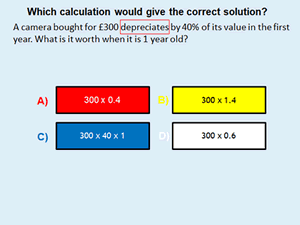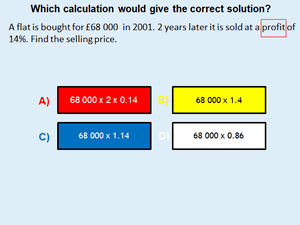An effective model for collaborative planning in maths
At Southfields Academy collaborative planning sessions have led to improved lesson quality, reduced planning time, and better staff retention
22/03/2019

What if you could spend time planning one top quality lesson rather than eight mediocre ones? What if you had support and ideas from your colleagues in doing so? What if all the students in your school covered the same material in maths, with the same resources, same terminology, and same procedural methods? Would that make it easier when picking up new classes the following year?
At Southfields Academy in Wandsworth, collaborative planning is now embedded in the maths department. Southfields is an 11-18 school (around 1200 students), and the school catchment is challenging on many measures – 49% pupil premium, 56% EAL, and with SEND units specifically to support those with hearing and speech and language difficulties. The maths department consists of a dozen teachers with roughly eight teaching in each year group.
Once a week, all teachers of Year 8 meet during a non-contact period. In another period, all teachers of Year 7 meet. At the beginning of term, they decide the small steps to break each topic into, and discuss common misconceptions and the difficulties students might face. Then they allocate forthcoming lessons for individual teachers to lead on.
Weekly meetings focus in detail on the planning of a couple of lessons. A teacher will have put together an initial set of slides that they will show. Colleagues are then invited to improve, add, challenge, question and polish the work done. The result is a lesson co-planned by the whole department, that everyone is happy to use.
Is directed time used for this? No – teachers willingly use their non-contact periods because they know it will save them planning time. And also because they enjoy the mathematical and pedagogical discussion with colleagues.
What are the benefits?
For students
- All students get a consistent diet of maths lessons, helping to even out inequalities in maths provision.
- The approach ensures consistency of coverage so staff can be confident in what students have covered and how.
For staff development
- This CPD is finely focused on the content of the next few lessons, so it is acutely relevant to all teachers, regardless of experience.
- Newer teachers learn from more experienced colleagues, particularly in anticipating misconceptions and areas of difficulty.
- More experienced colleagues benefit from the fresh insight that new teachers can bring.
- Southfields have found that collaborative planning has really helped to retain staff.
For curriculum development
- If changes are being made to the curriculum or teaching style, then this sort of joint planning can embed understanding and develop a common approach.
- Southfields have used their collaborative planning sessions to help them make the transition to teaching for mastery and all-attainment groupings.
What are the possible challenges?
- Collaborative planning for a year group requires everyone teaching that year group to have agreed, regular time available. Southfields have achieved this by timetabling a common non-contact period for each year group teaching team.
- Classes also need to be covering the same curriculum at roughly the same pace. At Southfields, all-attainment groupings in Year 7 and Year 8 make this possible. All teachers pitch in their ideas for support and greater depth, but the basic content coverage is the same for each class.
- The meetings require staff to be confident and willing to share their ideas. This trust has been established over time at Southfields, and staff still say that they felt nervous the first time they shared a lesson plan.
What does it look like in practice?
We sat in on a Year 8 collaborative planning meeting at Southfields on a Friday afternoon in March 2019. The teachers discussed two lessons coming up in the timetable. First, Harvey Jones went through his lesson on ‘Using multipliers to solve worded increase and decrease percentage problems’.
Harvey’s lesson was designed to encourage students to infer either a percentage ‘increase’ or ‘decrease’ from questions in which these words were not present. Instead, words such as ‘depreciation’, ‘growth’, ‘fall’, ‘loss’ and ‘accrue’ were used.
Colleagues were invited to polish the work he had done in planning. As the meeting progressed, Harvey made changes to his lesson slides as other teachers suggested improvements.
Here are some of the discussions that occurred:
Harvey has planned some ‘diagnostic questions’ – a question followed by four possible answers. Students will choose which they think is the correct answer. The remaining answers are designed to address common misconceptions.
The team consider how a class discussion might be managed after a diagnostic question, to best draw out misconceptions. They also discuss the best time to withdraw the support of multiple choice.
Someone spots an inconsistency across the team’s lessons. Some lessons express the multiplier first in a calculation:
e.g. 1.25 × 5 =
Some put it second:
e.g. 5 × 1.25 =
There’s a conversation about whether it matters, which way is most instinctive, and what implications this has for their longer-term planning. Someone mentions that commutativity was not sufficiently covered in Year 7. The team decide that their lessons should include both instances and that the equivalence should be made explicit. Colleagues agree to make this change to the lessons they teach prior to Harvey’s.
Imagine a teacher planning alone late at night, designing five lessons for the following day. This is the sort of nuance s/he is unlikely to notice or spend any time wondering about.
One teacher points out that Harvey has included questions containing numbers that are not required for the calculation – red herrings.
Experienced maths teachers know that students often pull numbers out of a question – assuming they know what calculation is needed – without reading the question properly. Putting in extra unnecessary numbers can encourage students to be more critical in their choice of numbers and calculation. It is not necessarily something an inexperienced teacher would think of.
Harvey’s main activity is a grid of nine questions to be given to students on a sheet and worked through three at a time. He has also provided working for each answer, as well as the solutions. He suggests that teachers might scaffold the questions by providing either the solutions or the working and asking students to match them. Harvey has done the planning, but what he is providing is far from prescriptive. He has made allowances for teachers using their own judgements and favoured teaching style.
Nicky Frost’s lesson is discussed next. She has been charged with creating a lesson for students to practise and discriminate between the four types of percentage calculations they have met to date.
Her colleagues are already familiar with the lesson, having spent some time looking at it in a previous meeting. This time around, the discussion is to fine-tune the lesson. They talk about the best wording for the four types of problem, to ensure clarity. This leads to a drilling down into exactly what the differences are between these various types of calculation, and where they might overlap. They also talk about the use of colour for readability on the whiteboard.
Throughout the meeting, the discussion is highly focused on the mathematics and the pedagogy, continually refining and improving each teacher’s understanding of their own philosophy. Through this sort of planning, teachers are able to develop a common approach while also taking advantage of individual strengths.
What do the department say about collaborative planning?
"Going from a training timetable into being an NQT was a real shock and I think that being involved in these planning meetings has really accelerated my progression. It gave me a quick start into mastery teaching that I was then able to adapt to all my other year groups. It's had an impact on cutting down planning time but also on efficiency with my other planning, in helping organise my thoughts."
"It's trying to fast forward that experience thing."
"We all want them [the lessons] to be really good, so you want people to tell you how to improve. I'd rather people tell me 'Well that was a terrible way of thinking about it, have you thought about this way?' because it means I can improve. And it's really nice being able to say that to more experienced teachers too!"
"We speak about how to challenge and support for every different topic. So I've now got this toolkit for every topic."
"As well as our Year 7 and 8 collaborative planning sessions, all our department meetings are spent sharing ideas, resources, teaching approaches and doing maths together. We make a point of rarely spending any meeting time on admin – this is done via email."
And other teachers…?
Southfields welcomes teachers from other schools to see their collaborative planning in action and observe lessons that arise from that planning. Their comments speak for themselves:
"This could revolutionise my practice and my department…"
"Seeing a mixed ability class all access the same content was brilliant."
"I feel inspired to start a collaborative planning meeting."
Gwenda Thomas, Lead Practitioner in maths at Southfields Academy, welcomes contact from any teachers interested in finding out more about collaborative planning - email Gwenda.
Or you could read about how St. Marylebone School in London used a similar model to support their transition to all-attainment groupings.
Or engage with our director, Charlie Stripp, through his blog post advocating collaborative planning by making it a timetabling priority.


